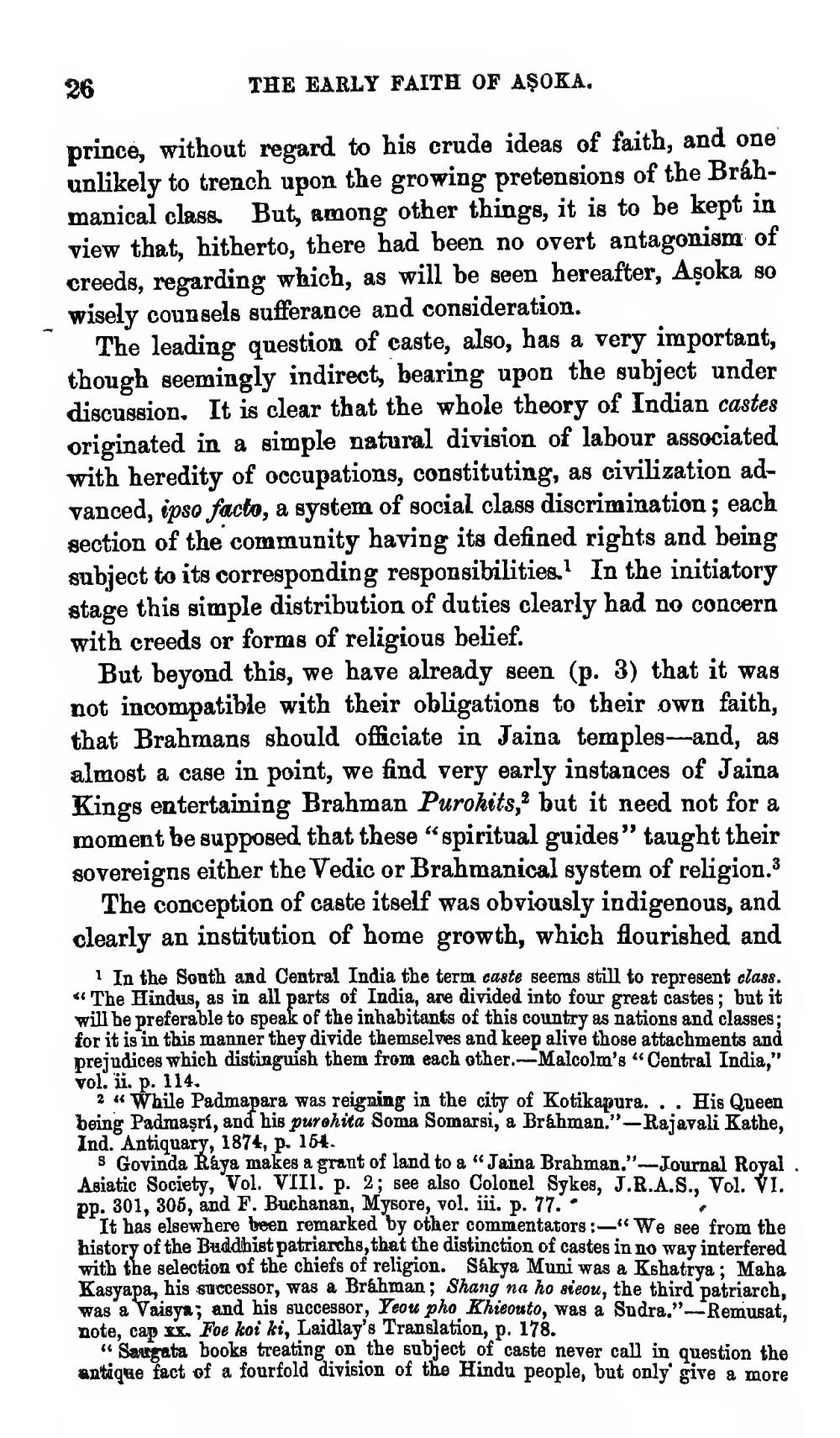________________
26
THE EARLY FAITH OF AŞOKA.
prince, without regard to his crude ideas of faith, and one unlikely to trench upon the growing pretensions of the Bráhmanical class. But, among other things, it is to be kept in view that, hitherto, there had been no overt antagonism of creeds, regarding which, as will be seen hereafter, Aşoka so wisely counsels sufferance and consideration.
The leading question of caste, also, has a very important, though seemingly indirect, bearing upon the subject under discussion. It is clear that the whole theory of Indian castes originated in a simple natural division of labour associated with heredity of occupations, constituting, as civilization advanced, ipso facto, a system of social class discrimination; each section of the community having its defined rights and being subject to its corresponding responsibilities. 1 In the initiatory stage this simple distribution of duties clearly had no concern with creeds or forms of religious belief.
But beyond this, we have already seen (p. 3) that it was not incompatible with their obligations to their own faith, that Brahmans should officiate in Jaina temples and, as almost a case in point, we find very early instances of Jaina Kings entertaining Brahman Purohits, but it need not for a moment be supposed that these "spiritual guides" taught their sovereigns either the Vedic or Brahmanical system of religion.3
The conception of caste itself was obviously indigenous, and clearly an institution of home growth, which flourished and
1 In the Sonth and Central India the term carte seems still to renresent class « The Hindus, as in all parts of India, are divided into four great castes; but it will be preferable to speak of the inhabitants of this country as nations and classes, for it is in this manner they divide themselves and keep alive those attachments and prejudices which distinguish them from each other.-- Malcolm's “Central India." vol. i. p. 114.
2 " While Padmapara was reigning in the city of Kotikapura. . . His Queen being Padmaaşri, and his purohită Soma Somarsi, a Brahman."-Rajavali Kathe, Ind. Antiquary, 1874, p. 154.
8 Govinda Raya makes a grant of land to a “Jaina Brahman." --Journal Royal . Asiatic Society, Vol. VIII. p. 2; see also Colonel Sykes, J.R.A.S., Vol. VI. pp. 301, 305, and F. Buchanan, Mysore, vol. iii. p. 77.
It has elsewhere been remarked by other commentators:-“We see from the history of the Buddhist patriarchs, that the distinction of castes in no way interfered with the selection of the chiefs of religion. Sakya Muni was a Kshatrya ; Maha Kasvapa. his successor, was a Brahman; Shang na ho si'eou, the third patriarch. was a Vaigyn; and his successor, Yeou pho Khieouto, was a Sudra." - Remusat, note, cap ris. Foe koi ki, Laidlay's Translation, p. 178.
"Sargata books treating on the subject of caste never call in question the antinge fact of a fourfold division of the Hindu people, but only give a more




